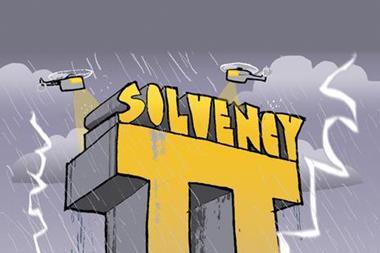The top seven tax risks of a new framework
Solvency II introduces a pan-European regulatory framework for insurance companies that presents significant tax issues. As they implement their Solvency II programmes in advance of the 2012 deadline, how should companies consider tax risks and their impact on business decisions?
Traditionally, taxation has not been embedded into wider business management procedures. Thus, taxation has lagged behind the risk management curve. But today, many companies are finally addressing their potential exposure, because tax risk can affect all aspects of business and strategic risks.
Tax risks: from strategic to operational
Solvency II is a risk-based framework that triggers an unprecedented level of change for insurance groups. This change creates significant potential tax risks and opportunities for businesses. By way of illustration, let’s consider the top tax risks that organisations need to consider in order to define, assess and manage them efficiently.
1. Operational risk: Companies must avoid missed exposures and lost opportunities. Miscalculating tax can impact compliance, financial reporting and tax planning. Key questions are: Is the tax department’s approach to risk commensurate with that of the rest of the organisation? Is it consistent with Solvency II risk requirements?
2. Reporting risk: Solvency II creates new tax and financial reporting requirements. Changes to the tax base under Solvency II will also present reporting challenges. Key questions are: How will new reporting processes be affected by Solvency II? Will they be adequate for tax reporting purposes? Is the organisation prepared for local tax changes?
3. Valuation risk: Deferred tax assets and liabilities will affect available capital, in some cases for the first time. Accurate valuation and deferred tax asset recognition strategies are critical. Key questions are: Is there a reliable basis for calculating and valuing deferred tax under Solvency II? Is the tax department adequately linked to the process?
4. Systems risk: As systems are redesigned for Solvency II, tax issues must be considered. For example, tax needs to be included in internal models, financial reporting systems and underwriting processes. Key questions are: Will tax reporting conform to redesigned financial reporting systems? Will the interface between financial reporting systems and tax systems need to be rebuilt?
5. Product risk: To remain competitive, companies must understand and manage the relationship between tax risk and products. Tax is often a key attribute of a product, and the product mix is critical to the Solvency II capital position. Key questions are: What are the impacts of Solvency II-driven tax regime changes on product pricing and profitability? Is there a need to change the unit pricing methodology?
6. Structural risk: The legal and organizational structure of a group impacts its capital needs. Many groups are looking at structural change in anticipation of Solvency II. Tax is a risk factor in restructuring any group, and can often subsidise the restructuring project. One key question: Does the timeline allow for restructuring and refinancing in a way that optimises tax and capital requirements?
7. Change-of-law risk: Tax laws continually evolve, but Solvency II is driving additional legal changes that could affect the business model. Key questions are: What are the potential tax law changes in each jurisdiction where the company operates? How is this risk reflected in the business models and the Pillar 2 Own Risk and Solvency Assessment?
Effectively controlling these tax risks within the risk management framework affords many benefits, including the opportunity to minimise capital requirements under Solvency II. Without addressing these risks as part of their Solvency II programmes, companies run the risk of implementing Solvency II without adequately dealing with tax across the breadth of their operations. In the short term, companies risk having to redesign their Solvency II programs to deal with tax issues that may be overlooked if they were not initially considered. In the long term, these risks could have major implications for the business.
Hannah Cleaton-Roberts is a partner in the London office of Ernst & Young.
Hosted by comedian and actor Tom Allen, 34 Gold, 23 Silver and 22 Bronze awards were handed out across an amazing 34 categories recognising brilliance and innovation right across the breadth of UK general insurance.














































No comments yet